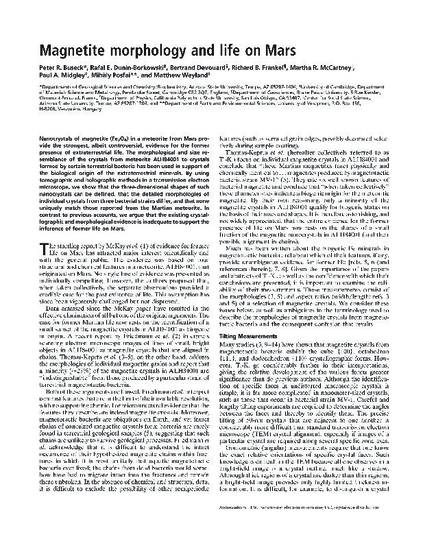
Nanocrystals of magnetite (Fe3O4) in a meteorite from Mars provide the strongest, albeit controversial, evidence for the former presence of extraterrestrial life. The morphological and size resemblance of the crystals from meteorite ALH84001 to crystals formed by certain terrestrial bacteria has been used in support of the biological origin of the extraterrestrial minerals. By using tomographic and holographic methods in a transmission electron microscope, we show that the three-dimensional shapes of such nanocrystals can be defined, that the detailed morphologies of individual crystals from three bacterial strains differ, and that none uniquely match those reported from the Martian meteorite. In contrast to previous accounts, we argue that the existing crystallographic and morphological evidence is inadequate to support the inference of former life on Mars.
Available at: http://works.bepress.com/rfrankel/13/
